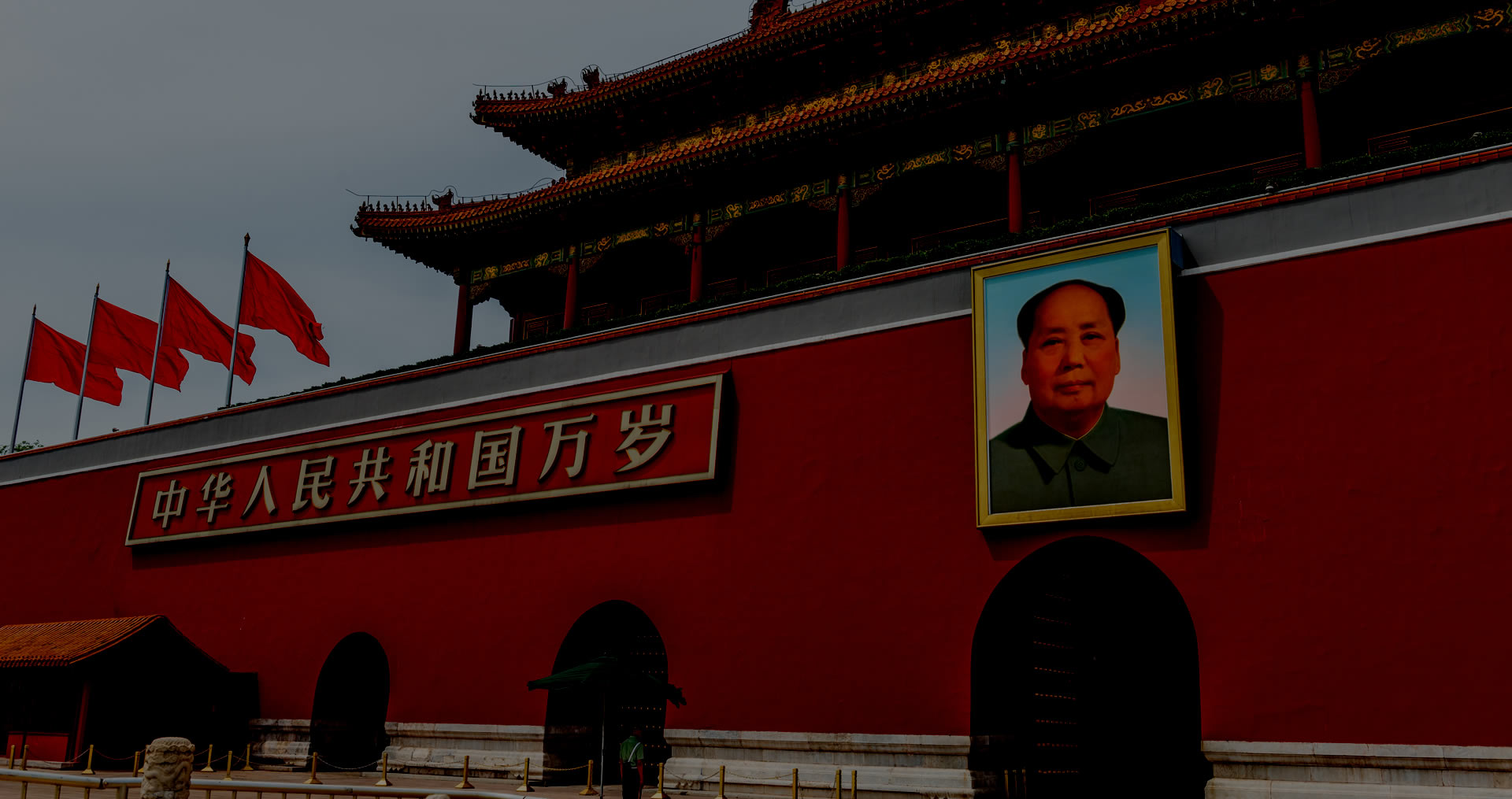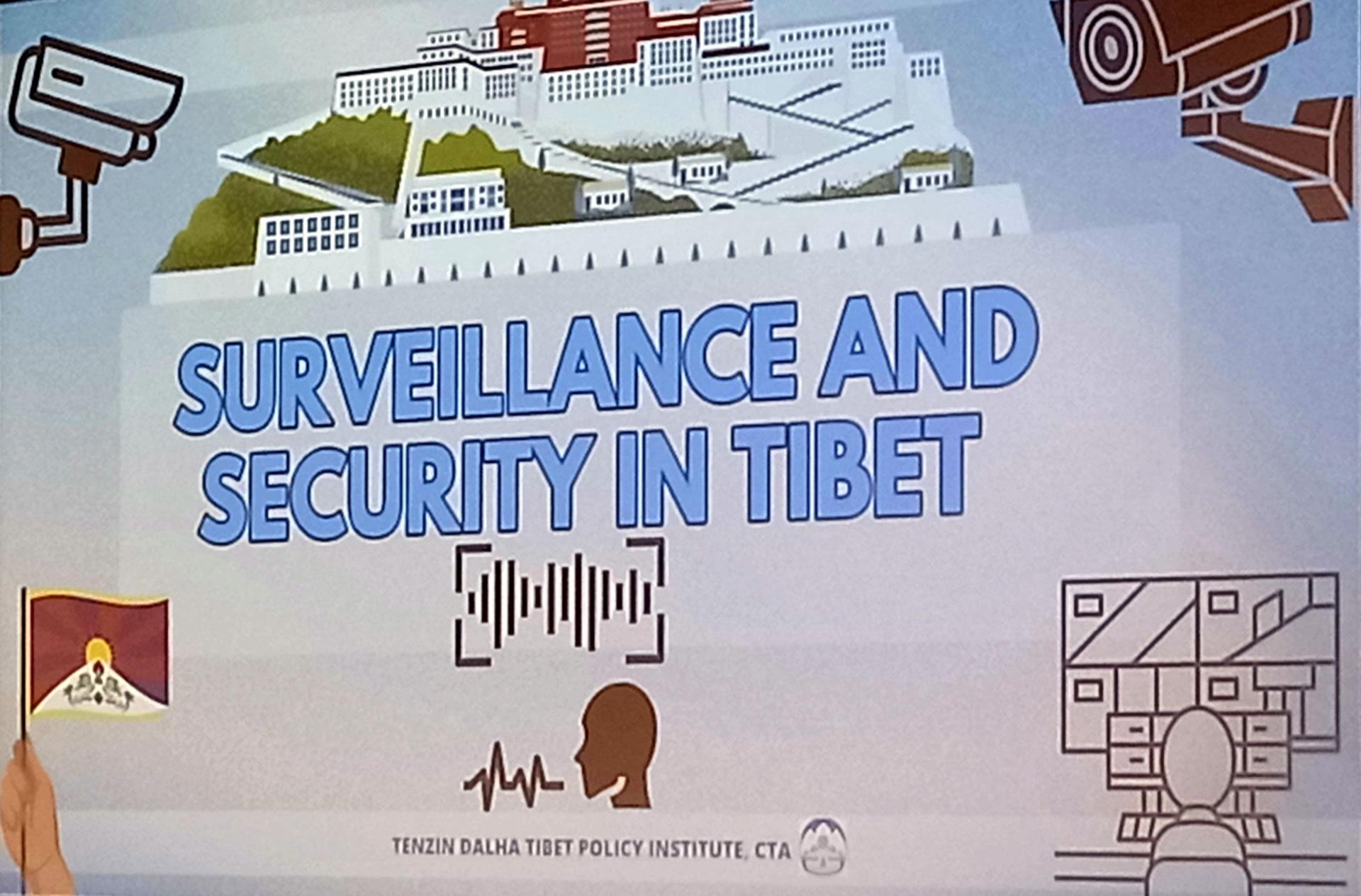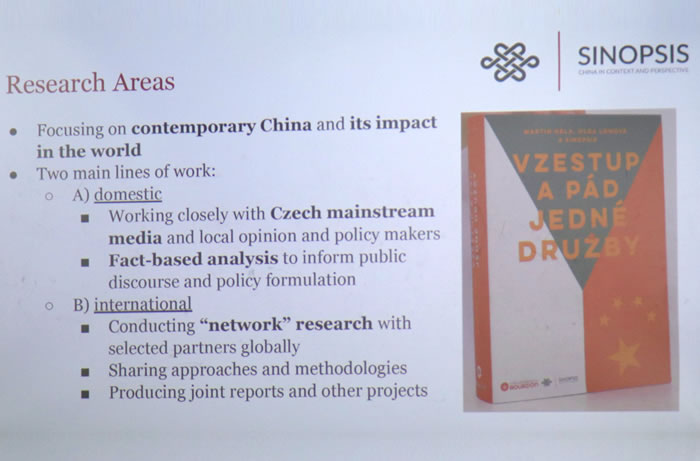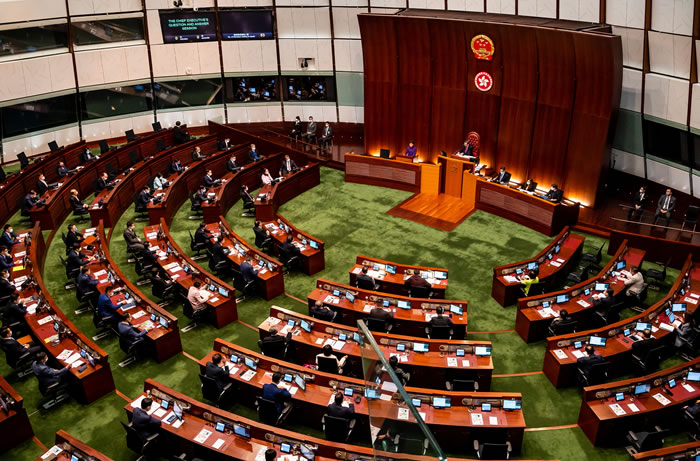Articles
The Sinic Analysis
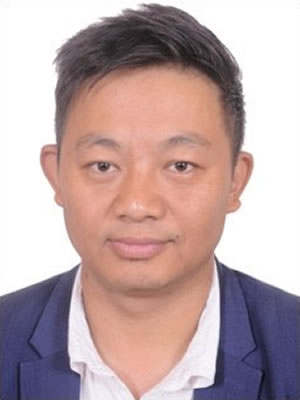 03-05-2024
03-05-2024Surveillance and security in Tibet: China creating an orwellian world with information warfare
The escalating scope and sophistication of China’s surveillance apparatus necessitate a critical examination of its implications for human rights and global democratic norms. This article advocates for an immediate cessation of technological abuses and a commitment to transparency, data protection, and adherence to international human rights standards by the Chinese government and the international community.
By Tenzin Dalha
Half a century ago, George Orwell penned the dystopian masterpiece "1984" depicting a world under total surveillance. Today, the relevance of Orwell’s vision is strikingly evident in China, where reality surpasses fiction in its advancement and ominous implications. In an era marked by escalating government surveillance, information manipulation, and the growing significance of propaganda, "1984" serves as a poignant reminder of the imperative to safeguard individual freedoms and privacy. The proliferation of misinformation, the rise of "fake news," and the proliferation of high-tech surveillance underscore the dangers of information control and its profound societal impact.
Communities worldwide harbor apprehensions about China’s potential to exert control over the internet and other media platforms, employing tools like the ’Great Firewall,’ ’Great Cannon,’ ’Golden Shield,’ and ’CGTN’ (CCTV) on a global scale. Concerns abound regarding the prospect of China accessing personal data on laptops and mobile phones, surveillance via CCTVs, and intrusion into smart devices within homes. The specter of living in an ’Orwellian World’ looms large as surveillance capabilities augment the reach of security services.
China has honed a vast network of real-time sensor technologies, including drones, remote sensing, and GPS tracking, alongside data mining and the implementation of a new social credit system. These technologies endow the state with unprecedented surveillance powers. Artificial intelligence, notably in big data analysis, facial and voice recognition, and a comprehensive DNA database of Tibetans, further amplifies China’s surveillance capabilities.
Alarmingly, this surveillance system is exporting digital systems, training, and technological infrastructure to numerous countries worldwide, spreading China’s digital authoritarianism beyond its borders. Chinese companies like Huawei and Hikvision have supplied surveillance cameras to dozens of countries with poor human rights records. Approximately half of the world’s nearly one billion surveillance cameras are estimated to be in China. Concerns over Chinese high-tech surveillance equipment aiding intelligence gathering have led some governments, such as the United States and the United Kingdom, to impose major restrictions on Huawei and ZTE technologies.
The complexity and uncertainty of artificial intelligence present heightened risks to international human rights. China’s autocratic regime exporting, selling, transferring, and servicing high-tech surveillance systems and internet controls globally contribute to the decline of democracies and the rise of autocrats worldwide.
Genesis of the Policy
Surveillance appears ingrained in the behavior of the Chinese Communist Party (CCP). With internet connectivity achieved in 1994 and a staggering 1.5 billion internet users by mid-2023. The concept of mass surveillance in China emerged during Mao’s era following the establishment of the People’s Republic of China in 1949. Mao introduced a mechanism of control that encompassed the entire nation and its people to strengthen his power in the newly founded PRC. In the early years, especially during the Cultural Revolution, mass surveillance was practiced through word-of-mouth dissemination of information. People were encouraged to keep a watchful eye on one another and report any behaviors that deviated from the dominant social ideals of the time. Under Mao’s regime, cities were divided into grids of socialist work units, where access to rations, housing, and other benefits was enforced by local informants who reported on the "wayward" behaviors of their neighbors. This system of social control was used to foster a model of communal self-policing.
In recent years, the CCP has faced criticism from both external and internal sources for its pervasive use of surveillance technologies, yet the current regime persists in its objectives.
President Xi Jinping’s tenure has witnessed an acceleration in artificial intelligence development, civil society suppression, and ideological control. A crackdown on communication, intensified propaganda efforts, and rapid surveillance expansion epitomize the regime’s trajectory, exemplified by evolving laws under the Cyber Administration of China (CAC).
China’s sophisticated surveillance capabilities are utilized to target and amass personal information to gain leverage on important actors and to gather Big Data, the use of which is essentially unlimited. Beijing’s remarkable growth and deployment of data-gathering systems and surveillance tools globally have been accompanied by little to no transparency or accountability. As a result, China emerges as a frontrunner in global surveillance, reinforcing the grip of the Communist Party regime. Such measures endanger the safety and security of dissidents and activists worldwide and strengthen rogue and undemocratic regimes.
In Tibet, sophisticated mass surveillance technology serves as a tool for authoritarian rule. Critics perceive this as a perilous scenario: an Orwellian realm where "Big Brother" perpetually watches, capable of spying on anyone from human rights lawyers to political dissidents, activists, persecuted minorities, and even unsuspecting citizens.
Over the years, China’s surveillance apparatus in Tibet has burgeoned, imposing grassroots-level control, and perpetrating human rights abuses. The proliferation of manned and unmanned checkpoints, AI, CCTV networks, and re-education centers under the guise of national security exacerbates the already oppressive environment in Tibet.
The advanced technical capabilities gained through AI tools for monitoring and surveilling Tibetans, alongside mass surveillance, and censorship policies, including disinformation campaigns, exacerbate the deteriorating human rights situation in Tibet. As it continues to amass more data and develop new ways to process it, the Party dangles the promise of a perfectly engineered society; one in which the government has the potential to monitor everything Tibetans see and track everything Tibetans do. Now people can be nudged and cajoled by invisible algorithms delivering personalized content to their phones. Inside Tibet, people exist within a meticulously designed and managed information bubble, where the government exerts intense efforts to subjugate Tibet and its populace.
Current Status of the Policy
From faces to DNA profiles, iris scans to voiceprint the Chinese government consolidating vast quantities of unique personal data with one goal to build a comprehensive profile for each citizen accessible anytime, anywhere. This sweeping surveillance effort lays the groundwork for increasingly sophisticated control methods aimed at preempting perceived threats.
China is aggressively pursuing ways to filter and control access to information for its citizens within its assumed borders. It filters a significant portion of content related to its own dismal human rights record. The consistent and stringent regulation of the internet by the government results in a lack of transparency within the system and a deficit of trust among its citizens.
In 2022, mass DNA collection drives were reported in all seven prefectures or municipalities in the TAR, covering the western part of the Tibetan plateau. These drives are part of ongoing efforts by Chinese authorities to establish a pervasive police presence at the grassroots level throughout the region. DNA collection drives, indicate that China is transitioning towards what can be described as a "biosecurity state" – the next phase of utilizing data to further repress and control Tibet and other regions. It is an intriguing and powerful example of transnational oppression, as state actors now extend their reach beyond borders to persecute and silence individuals who are outside their jurisdiction.
Through high-tech oversight mechanisms, the CCP is taking the suppression of religious worship in China to a whole new level. While China’s Constitution protects the freedom of religious belief, the officially atheist CCP has tightened its grip over religion through new surveillance technology. Evidence is mounting regarding the potential adverse human rights impact on religious minorities in China, including Tibetan-Buddhists, Protestants, Muslims, Falun Gong practitioners, and Catholics. Chinese police surveillance units are reportedly working within Buddhist monasteries as part of a crackdown on Tibetan Buddhist religious institutions. High-tech surveillance cameras have been installed by police around the monasteries, enabling officers to monitor monks around the clock. Monks have also been forced to install monitoring apps on their mobile phones, enabling police to identify contacts and track conversations, leading to increased self-censorship.
In 2023, as part of China’s implementation of cutting-edge technological systems for border surveillance, drones are extensively used. China has also begun to utilize unmanned aerial vehicles (UAVs) for various missions, further tightening the Chinese government’s grip on Tibet and its neighboring countries.
The Chinese government has long scrutinized Tibetans for evidence of disloyalty to the regime. Such decisions severely restrict freedom of speech, leading people to live in constant fear of detention. Many Tibetans have been charged for alleged involvement in "subversion of state law and leaking information to the outside world," considered a "state security crime."
The latest report on 22nd February of mass arrests in Eastern Tibet against for the construction of hydro power project on the Drichu (Jinsha) river, located on the upper reaches of the Yangtze River that would force to relocate two villages and destroy Tibetan Buddhist monasteries and ancient murals. Local Tibetans who were seen in videos and images smuggled out of Tibet, pleading with Chinese authorities nonviolently on their knees with folded hands to remain on their ancestral lands instead of being forced to relocate peaceful protestors were arbitrarily arrested, suppressed with severe violence, imprisoned, yet their status is to ascertain. China’s hydro project policy has allegedly result in the disappearance elements of Tibetan culture; this has been considered as a cultural genocide repression.
Conclusion: An Appeal for International Security and Ethical Governance
The escalating scope and sophistication of China’s surveillance apparatus necessitate a critical examination of its implications for human rights and global democratic norms. This article advocates for an immediate cessation of technological abuses and a commitment to transparency, data protection, and adherence to international human rights standards by the Chinese government and the international community.
The CCP must STOP WITH IMMEDIATE EFFECT the abuse of technology and the high-tech human rights violations carried out against people under its rule including Tibetans, Uyghurs and other Turkic peoples, Mongolians, and Hong-Kongers; the high-tech religious persecution of people of faith; and the export, sale, transfer and servicing of its high-tech surveillance tools to other countries.
Governments, international institutions and business enterprises, including multi-national companies, to fully and meaningfully implement the UN Guiding Principles and relevant treaty obligations in their business dealings with China and to stop funding/investing in research and manufacturing of surveillance tools by China.
 Tenzin DalhaResearch Fellow at the Tibet Policy Institute, Central Tibetan Administration. He received his bachelor’s degree in Journalism and Communication from the University of Madras in 2014. His current research field is Chinese digital and cybersecurity policy. His other research interests include digital freedom, Chinese cybersecurity, surveillance and censorship policies.
Tenzin DalhaResearch Fellow at the Tibet Policy Institute, Central Tibetan Administration. He received his bachelor’s degree in Journalism and Communication from the University of Madras in 2014. His current research field is Chinese digital and cybersecurity policy. His other research interests include digital freedom, Chinese cybersecurity, surveillance and censorship policies.
Half a century ago, George Orwell penned the dystopian masterpiece "1984" depicting a world under total surveillance. Today, the relevance of Orwell’s vision is strikingly evident in China, where reality surpasses fiction in its advancement and ominous implications. In an era marked by escalating government surveillance, information manipulation, and the growing significance of propaganda, "1984" serves as a poignant reminder of the imperative to safeguard individual freedoms and privacy. The proliferation of misinformation, the rise of "fake news," and the proliferation of high-tech surveillance underscore the dangers of information control and its profound societal impact.
Communities worldwide harbor apprehensions about China’s potential to exert control over the internet and other media platforms, employing tools like the ’Great Firewall,’ ’Great Cannon,’ ’Golden Shield,’ and ’CGTN’ (CCTV) on a global scale. Concerns abound regarding the prospect of China accessing personal data on laptops and mobile phones, surveillance via CCTVs, and intrusion into smart devices within homes. The specter of living in an ’Orwellian World’ looms large as surveillance capabilities augment the reach of security services.
China has honed a vast network of real-time sensor technologies, including drones, remote sensing, and GPS tracking, alongside data mining and the implementation of a new social credit system. These technologies endow the state with unprecedented surveillance powers. Artificial intelligence, notably in big data analysis, facial and voice recognition, and a comprehensive DNA database of Tibetans, further amplifies China’s surveillance capabilities.
Alarmingly, this surveillance system is exporting digital systems, training, and technological infrastructure to numerous countries worldwide, spreading China’s digital authoritarianism beyond its borders. Chinese companies like Huawei and Hikvision have supplied surveillance cameras to dozens of countries with poor human rights records. Approximately half of the world’s nearly one billion surveillance cameras are estimated to be in China. Concerns over Chinese high-tech surveillance equipment aiding intelligence gathering have led some governments, such as the United States and the United Kingdom, to impose major restrictions on Huawei and ZTE technologies.
The complexity and uncertainty of artificial intelligence present heightened risks to international human rights. China’s autocratic regime exporting, selling, transferring, and servicing high-tech surveillance systems and internet controls globally contribute to the decline of democracies and the rise of autocrats worldwide.
Genesis of the Policy
Surveillance appears ingrained in the behavior of the Chinese Communist Party (CCP). With internet connectivity achieved in 1994 and a staggering 1.5 billion internet users by mid-2023. The concept of mass surveillance in China emerged during Mao’s era following the establishment of the People’s Republic of China in 1949. Mao introduced a mechanism of control that encompassed the entire nation and its people to strengthen his power in the newly founded PRC. In the early years, especially during the Cultural Revolution, mass surveillance was practiced through word-of-mouth dissemination of information. People were encouraged to keep a watchful eye on one another and report any behaviors that deviated from the dominant social ideals of the time. Under Mao’s regime, cities were divided into grids of socialist work units, where access to rations, housing, and other benefits was enforced by local informants who reported on the "wayward" behaviors of their neighbors. This system of social control was used to foster a model of communal self-policing.
In recent years, the CCP has faced criticism from both external and internal sources for its pervasive use of surveillance technologies, yet the current regime persists in its objectives.
President Xi Jinping’s tenure has witnessed an acceleration in artificial intelligence development, civil society suppression, and ideological control. A crackdown on communication, intensified propaganda efforts, and rapid surveillance expansion epitomize the regime’s trajectory, exemplified by evolving laws under the Cyber Administration of China (CAC).
China’s sophisticated surveillance capabilities are utilized to target and amass personal information to gain leverage on important actors and to gather Big Data, the use of which is essentially unlimited. Beijing’s remarkable growth and deployment of data-gathering systems and surveillance tools globally have been accompanied by little to no transparency or accountability. As a result, China emerges as a frontrunner in global surveillance, reinforcing the grip of the Communist Party regime. Such measures endanger the safety and security of dissidents and activists worldwide and strengthen rogue and undemocratic regimes.
In Tibet, sophisticated mass surveillance technology serves as a tool for authoritarian rule. Critics perceive this as a perilous scenario: an Orwellian realm where "Big Brother" perpetually watches, capable of spying on anyone from human rights lawyers to political dissidents, activists, persecuted minorities, and even unsuspecting citizens.
Over the years, China’s surveillance apparatus in Tibet has burgeoned, imposing grassroots-level control, and perpetrating human rights abuses. The proliferation of manned and unmanned checkpoints, AI, CCTV networks, and re-education centers under the guise of national security exacerbates the already oppressive environment in Tibet.
The advanced technical capabilities gained through AI tools for monitoring and surveilling Tibetans, alongside mass surveillance, and censorship policies, including disinformation campaigns, exacerbate the deteriorating human rights situation in Tibet. As it continues to amass more data and develop new ways to process it, the Party dangles the promise of a perfectly engineered society; one in which the government has the potential to monitor everything Tibetans see and track everything Tibetans do. Now people can be nudged and cajoled by invisible algorithms delivering personalized content to their phones. Inside Tibet, people exist within a meticulously designed and managed information bubble, where the government exerts intense efforts to subjugate Tibet and its populace.
Current Status of the Policy
From faces to DNA profiles, iris scans to voiceprint the Chinese government consolidating vast quantities of unique personal data with one goal to build a comprehensive profile for each citizen accessible anytime, anywhere. This sweeping surveillance effort lays the groundwork for increasingly sophisticated control methods aimed at preempting perceived threats.
China is aggressively pursuing ways to filter and control access to information for its citizens within its assumed borders. It filters a significant portion of content related to its own dismal human rights record. The consistent and stringent regulation of the internet by the government results in a lack of transparency within the system and a deficit of trust among its citizens.
In 2022, mass DNA collection drives were reported in all seven prefectures or municipalities in the TAR, covering the western part of the Tibetan plateau. These drives are part of ongoing efforts by Chinese authorities to establish a pervasive police presence at the grassroots level throughout the region. DNA collection drives, indicate that China is transitioning towards what can be described as a "biosecurity state" – the next phase of utilizing data to further repress and control Tibet and other regions. It is an intriguing and powerful example of transnational oppression, as state actors now extend their reach beyond borders to persecute and silence individuals who are outside their jurisdiction.
Through high-tech oversight mechanisms, the CCP is taking the suppression of religious worship in China to a whole new level. While China’s Constitution protects the freedom of religious belief, the officially atheist CCP has tightened its grip over religion through new surveillance technology. Evidence is mounting regarding the potential adverse human rights impact on religious minorities in China, including Tibetan-Buddhists, Protestants, Muslims, Falun Gong practitioners, and Catholics. Chinese police surveillance units are reportedly working within Buddhist monasteries as part of a crackdown on Tibetan Buddhist religious institutions. High-tech surveillance cameras have been installed by police around the monasteries, enabling officers to monitor monks around the clock. Monks have also been forced to install monitoring apps on their mobile phones, enabling police to identify contacts and track conversations, leading to increased self-censorship.
In 2023, as part of China’s implementation of cutting-edge technological systems for border surveillance, drones are extensively used. China has also begun to utilize unmanned aerial vehicles (UAVs) for various missions, further tightening the Chinese government’s grip on Tibet and its neighboring countries.
The Chinese government has long scrutinized Tibetans for evidence of disloyalty to the regime. Such decisions severely restrict freedom of speech, leading people to live in constant fear of detention. Many Tibetans have been charged for alleged involvement in "subversion of state law and leaking information to the outside world," considered a "state security crime."
The latest report on 22nd February of mass arrests in Eastern Tibet against for the construction of hydro power project on the Drichu (Jinsha) river, located on the upper reaches of the Yangtze River that would force to relocate two villages and destroy Tibetan Buddhist monasteries and ancient murals. Local Tibetans who were seen in videos and images smuggled out of Tibet, pleading with Chinese authorities nonviolently on their knees with folded hands to remain on their ancestral lands instead of being forced to relocate peaceful protestors were arbitrarily arrested, suppressed with severe violence, imprisoned, yet their status is to ascertain. China’s hydro project policy has allegedly result in the disappearance elements of Tibetan culture; this has been considered as a cultural genocide repression.
Conclusion: An Appeal for International Security and Ethical Governance
The escalating scope and sophistication of China’s surveillance apparatus necessitate a critical examination of its implications for human rights and global democratic norms. This article advocates for an immediate cessation of technological abuses and a commitment to transparency, data protection, and adherence to international human rights standards by the Chinese government and the international community.
The CCP must STOP WITH IMMEDIATE EFFECT the abuse of technology and the high-tech human rights violations carried out against people under its rule including Tibetans, Uyghurs and other Turkic peoples, Mongolians, and Hong-Kongers; the high-tech religious persecution of people of faith; and the export, sale, transfer and servicing of its high-tech surveillance tools to other countries.
Governments, international institutions and business enterprises, including multi-national companies, to fully and meaningfully implement the UN Guiding Principles and relevant treaty obligations in their business dealings with China and to stop funding/investing in research and manufacturing of surveillance tools by China.

